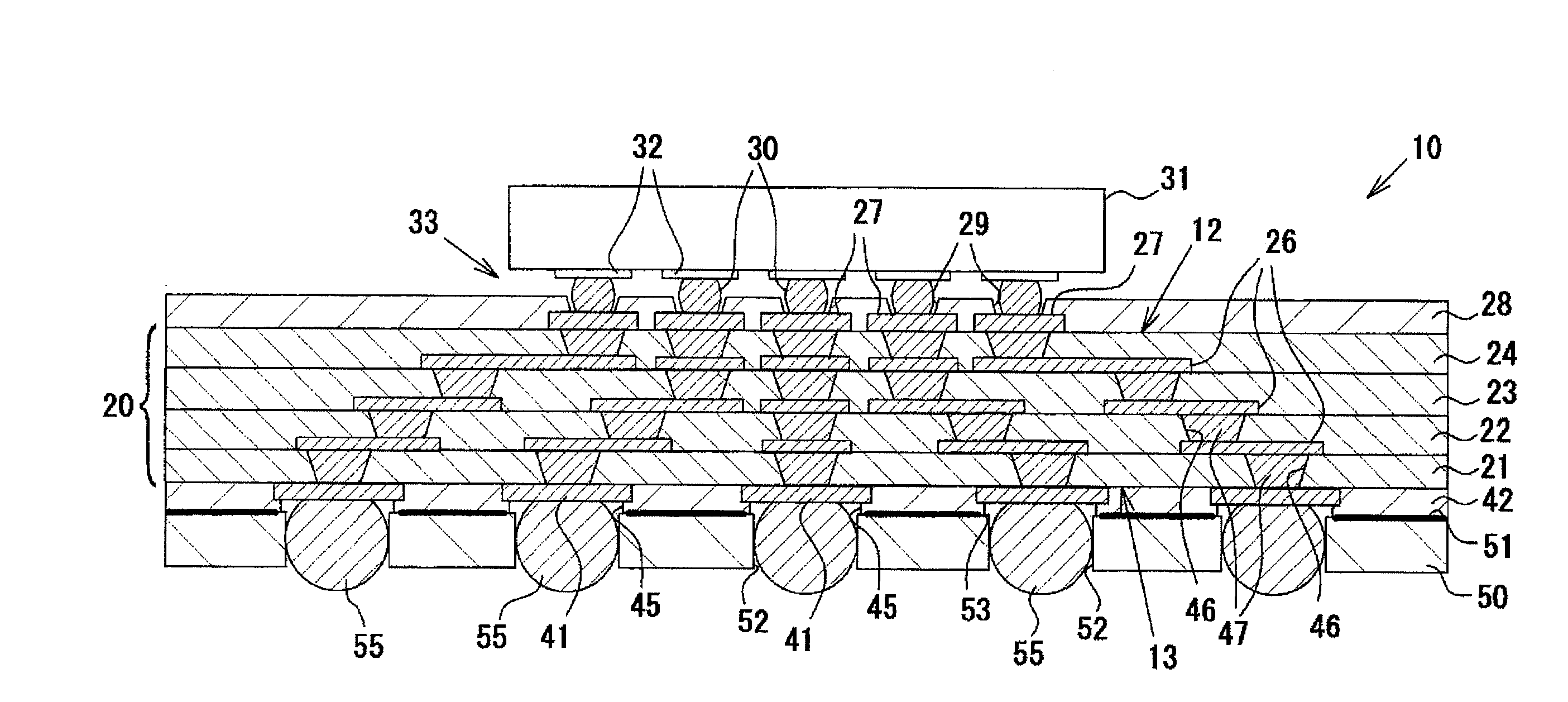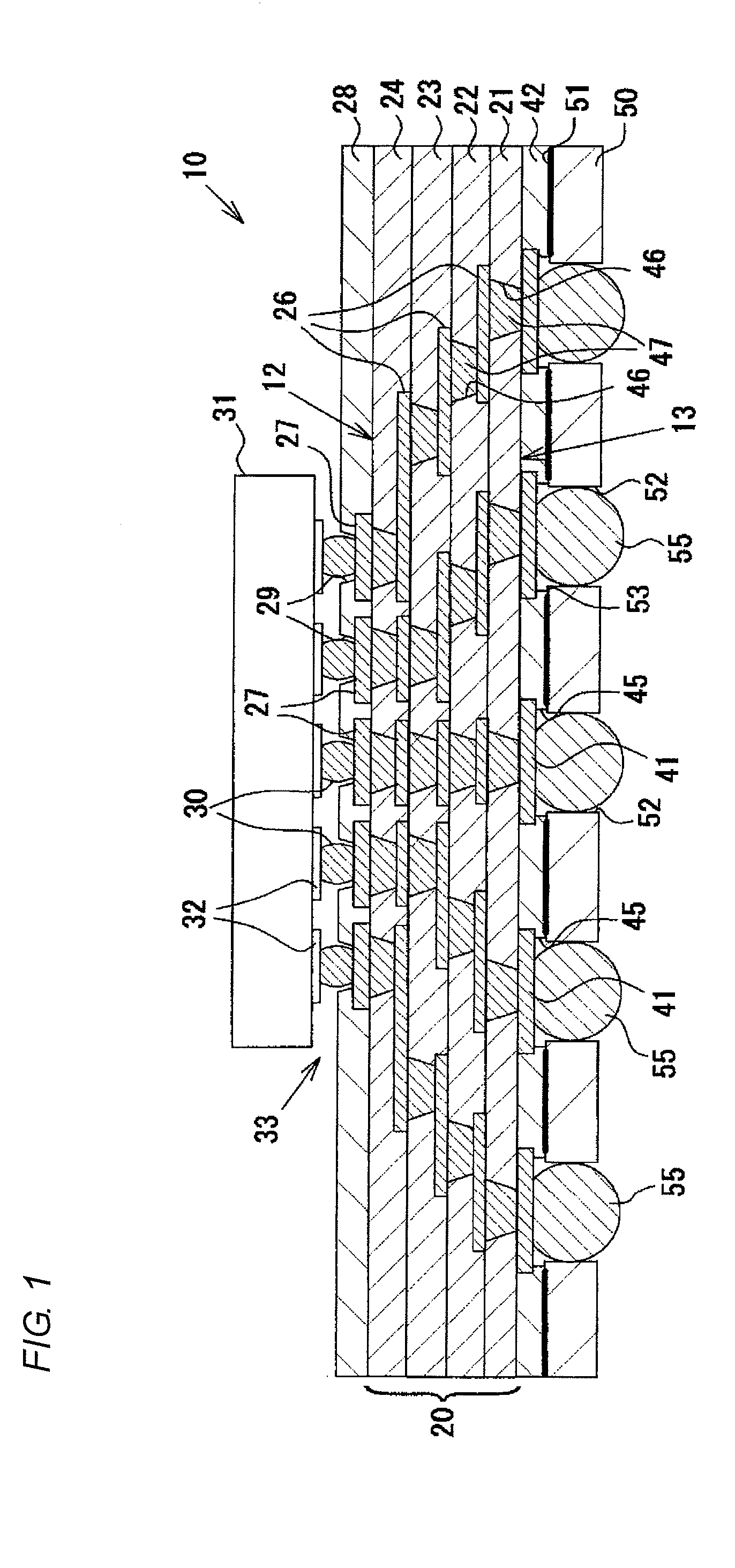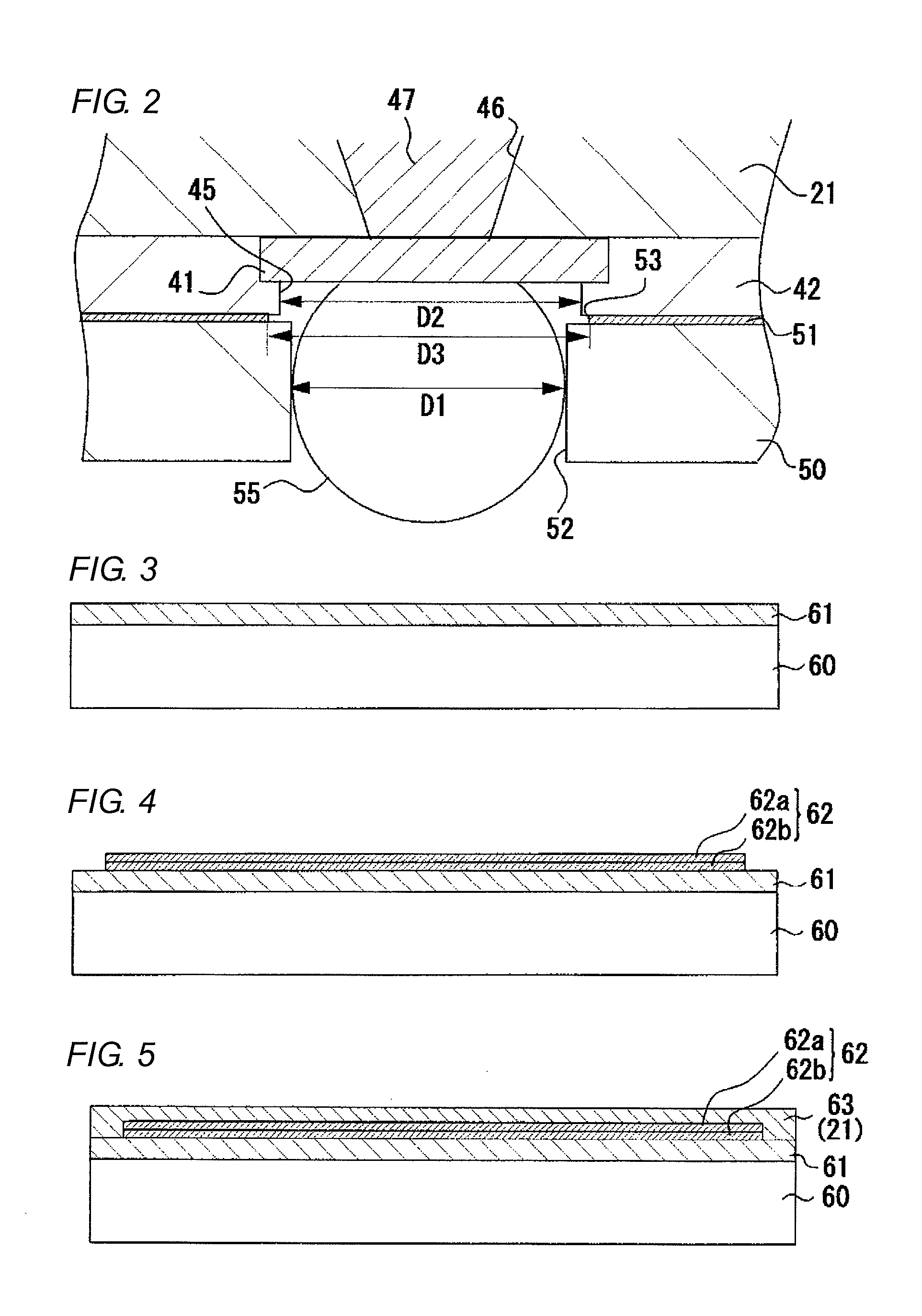Multi-layer wiring board and method of manufacturing the same
a wiring board and multi-layer technology, applied in the direction of sustainable manufacturing/processing, electrical apparatus construction details, final product manufacturing, etc., can solve the problems of difficult to directly connect the ic chip to the mother board, difficult to improve the process speed, and difficult to ensure the strength of the coreless wiring board, etc., to achieve high workability, easy to form the opening of the reinforcing plate, and sufficient adhesion strength
- Summary
- Abstract
- Description
- Claims
- Application Information
AI Technical Summary
Benefits of technology
Problems solved by technology
Method used
Image
Examples
Embodiment Construction
[0046]Exemplary embodiments of the present invention will be described with reference to the drawings hereinafter.
[0047]FIG. 1 is a cross-sectional schematic view illustrating the structure of a coreless wiring board (multi-layer wiring board) according to the exemplary embodiment.
[0048]As shown in FIG. 1, a coreless wiring board 10 does not include a core substrate, and includes a multi-layer laminated structure obtained by alternately forming four resin insulating layers (interlayer insulating layers) 21, 22, 23, and 24 made of epoxy resin and conductor layers 26 made of copper. The resin insulating layers 21 to 24 are interlayer insulating layers that have the same thickness and are made of the same material, and are formed of a sheet-shaped build-up material made of epoxy resin.
[0049]Terminal pads 27 (connection terminals on front surface side) are arranged in an array on a front surface 12 of the coreless wiring board 10 (the front surface of the fourth resin insulating layer 2...
PUM
| Property | Measurement | Unit |
|---|---|---|
| diameter | aaaaa | aaaaa |
| thickness | aaaaa | aaaaa |
| temperature | aaaaa | aaaaa |
Abstract
Description
Claims
Application Information
 Login to View More
Login to View More - R&D
- Intellectual Property
- Life Sciences
- Materials
- Tech Scout
- Unparalleled Data Quality
- Higher Quality Content
- 60% Fewer Hallucinations
Browse by: Latest US Patents, China's latest patents, Technical Efficacy Thesaurus, Application Domain, Technology Topic, Popular Technical Reports.
© 2025 PatSnap. All rights reserved.Legal|Privacy policy|Modern Slavery Act Transparency Statement|Sitemap|About US| Contact US: help@patsnap.com



